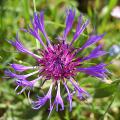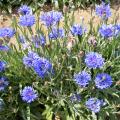White Centaurea
Would this plant suit my garden? Set up your Plantfit profile →
Available in 1 sizes
Available in 0 sizes
Available in 1 sizes
Available in 2 sizes
Available in 1 sizes
A selection of Centaurea with white flowers. Less common than blue or pink, white can also be found among the centaureas: the white mountain cornflower Centaurea montana 'Alba' is a rather rare form of this famous montane perennial. The cornflower Centaurea cyanus, an annual, has produced some lovely selections with white flowers, single or double, which can be found in seed mixes. The Amberbosa (Centaurea) moshata 'Alba' is an annual centaurea with white pompom flowers and a creamy heart that exudes a sweet fragrance reminiscent of amber. This pretty plant is perfect for filling empty spaces in flower beds, and its flowers are wonderful in fresh or dried bouquets. Too rarely planted in gardens, the Fischer's Centaurea or White Centaurea is a vigorous and very hardy alpine perennial, charming, tolerant, and easy to grow. Discover these countryside flowers, generous, undemanding, and attractive to bees.
Robust and highly adaptable, the centaurea is easy to grow in any well-drained soil, even limestone.
Haven't found what you were looking for?


















































